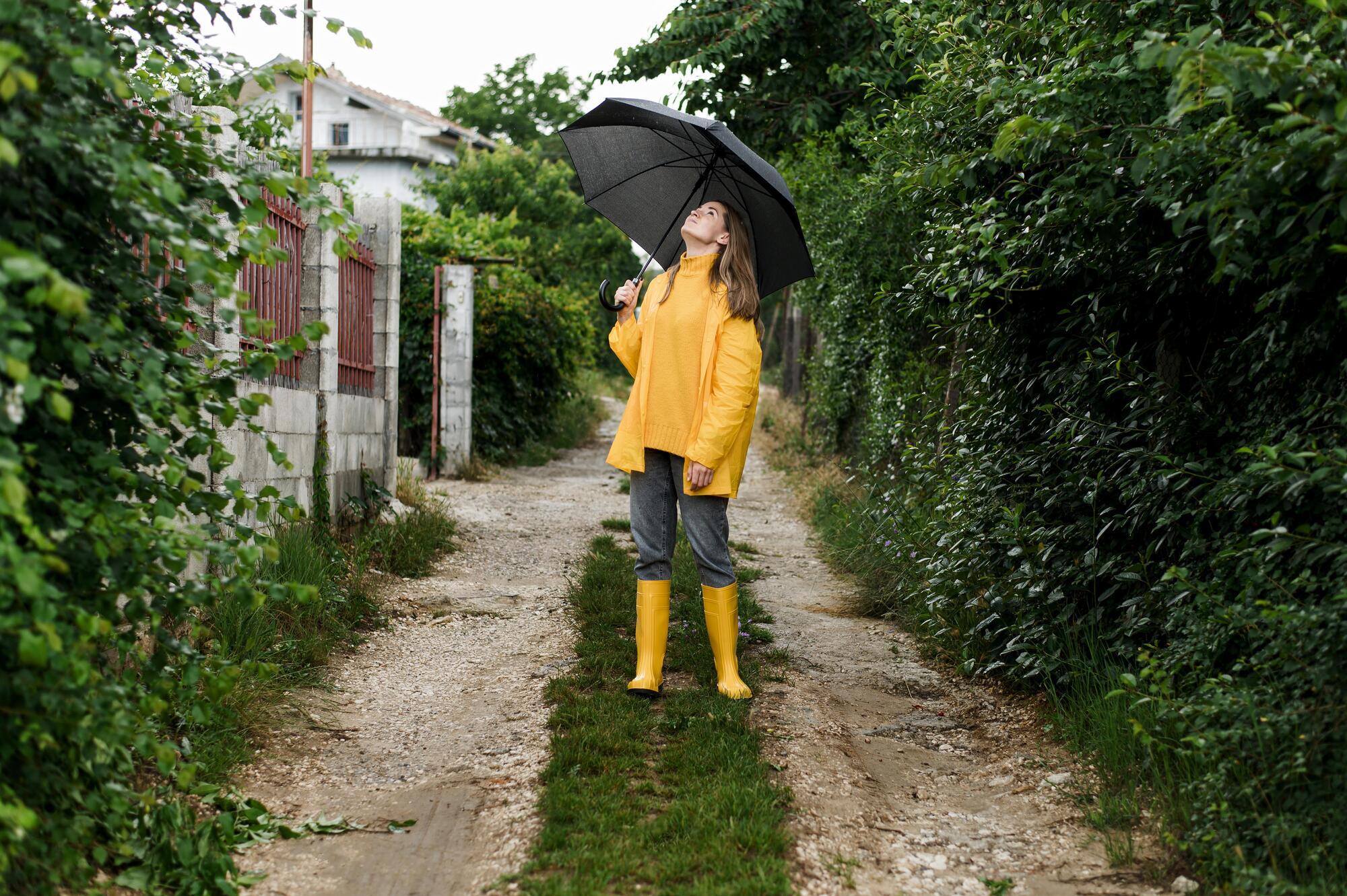News
Who gets wet faster in the rain: a person who runs or walks? Physicist's explanation
There is probably no one who has never been caught in the rain without an umbrella. Whether it's drizzling rain or a heavy downpour, our instinct is to run to minimize how much we get wet.
But is this really the case? Does acceleration really reduce the level of wetness? And is there an ideal speed that minimizes the total amount of water you encounter on your way from point A to point B? The physicist's explanation was written by Science Alert.
Imagine that the rain is falling evenly and vertically. We can divide your body into two surfaces: vertical (front and back) and horizontal (head and shoulders).
When moving forward in the rain, vertical surfaces such as the human body will receive more raindrops as your speed increases. From the perspective of the walker, the drops appear to fall at an angle with a horizontal velocity equal to their walking speed. While walking faster means more drops per second, it also reduces the time spent in the rain. As a result, both effects balance each other out: more drops per unit time, but less time in the rain overall.
When a person is stationary, the rain falls only on horizontal surfaces - the top of the head and shoulders. And when he starts moving, he receives the raindrops that would have fallen in front of him, missing the drops that are now falling behind him. This creates a balance, and in the end, the amount of rain received on horizontal surfaces remains the same, regardless of walking speed. However, because walking faster reduces the total time spent in the rain, the total amount of water collected on horizontal surfaces will be less.
So, the conclusion is that you should speed up your pace when walking in the rain.
If you are interested in the mathematical approach, here is an explanation:
Let "ρ" denote the number of drops per unit volume, and "a" denote their vertical velocity. We will denote "Sh" as the horizontal surface area of the face (e.g., head and shoulders) and "Sv" as the vertical surface area (e.g., body). When a person stands still, the rain falls only on the horizontal surface, "Sh". This is the amount of water you will receive on these areas.
Even if the rain is falling vertically, from the perspective of a pedestrian moving at speed "V", it appears that the rain is falling obliquely, and the angle of the drops' trajectory depends on your speed.
During a period of time "T",a raindrop travels a distance"aT". Therefore, all the raindrops at a shorter distance will reach the surface: these are the drops inside the cylinder with a base"Sh" and height "aT", which gives
ρ*Sh*a*T
As the person moves forward, the droplets seem to be animated by an oblique velocity that is the result of the composition of the velocity "a" and the velocity "V". The number of droplets reaching "Sh" remains the same because the velocity "V" is horizontal and therefore parallel to "Sh". However, the number of droplets reaching the surface "Sv", which was previously zero when the person was stationary, has now increased.
This is equal to the number of droplets contained in a horizontal cylinder with base area "Sv" and length "v.T." This length represents the horizontal distance the drops travel during this time interval.
In total, a person receives the number of drops given by the expression:
ρ*(Sh*a + Sv*v)*T
Now you need to take into account the time interval during which the person is in the rain. If you cover a distance "d" at a constant speed "V", the time you spend walking is d/V. If you add this to the equation, the total amount of water you encounter is:
ρ*(Sh*a + Sv*v)*d/v = ρ*(Sh*a/v + Sv)*d
This equation gives us two key conclusions:
- The faster you move, the less water falls on our head and shoulders.
- The water that hits the vertical part of your body remains the same regardless of speed because the less time spent in the rain is compensated by more raindrops per second.
That is, to get less wet in the rain, you need to lean forward well and move quickly. But be careful: leaning forward increases the "Sh". To really stay dry, you need to increase your speed enough to compensate for this.
You can find only verified information in the OBOZ.UA Telegram channel and Viber. Do not fall for fakes!






























